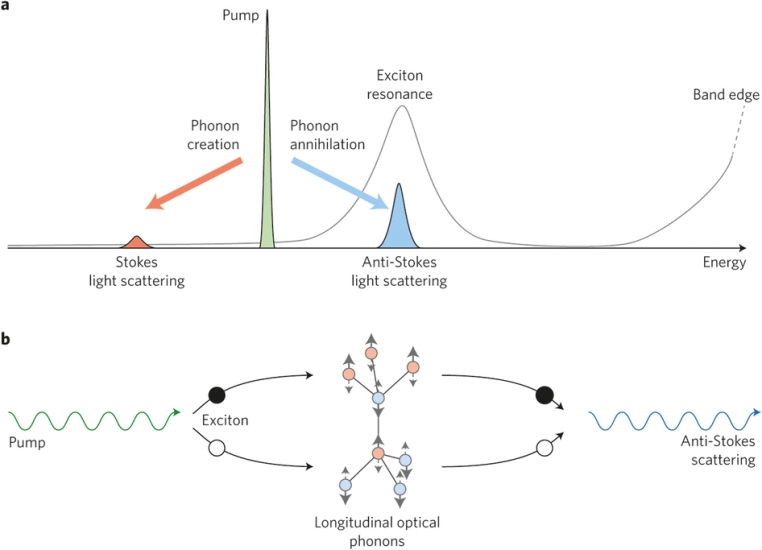Last century has witnessed a tremendous success of laser cooling technology in the fields of precision spectroscopy, time and frequency metrology, quantum optics, cavity optomechnics and solid-state optical refrigeration. As one of the laser cooling techniques, sideband Raman cooling plays an important role in quantum ground state preparation and coherent quantum-state manipulation. By using one or several detuned laser beams around sidebands of optical transitions, sideband Raman cooling has led to discoveries of many interesting quantum phenomena, including laser cooling and amplification of external motion state, normal mode splitting, electromagnetically induced transparency, and creation and manipulation of coherent quantum states such as superposition states, squeezing states and entangled states. However, those substantial progresses are still limited in trapped atomic ions and cavity optomechanics, which need be operated at very low bath temperature then use laser to precool the system below than 0.1 K even tens of nK due to very low frequency of phonons ranges from several kHz to GHz.
Recently, a cooperated work by Prof. ZHANG Jun’s Group in Institute of Semiconductors, Chinese Academy of Sciences, and Prof. XIONG Qihua’s Group in Nanyang Technological University in Singapore, has successfully achieved sideband Raman cooling and heating experiments of longitudinal optical phonon (LOP) with a 6.23 THz frequency in semiconductor zinc telluride nano-ribbons. The ‘radiation forces’ in the Raman cooling of a LOP result from photoelastically induced Fr?hlich forces, in which a long-wavelength LOP can lead to the separation of the oppositely charged atoms and thus generate a macroscopic electric field inside the crystals. The force that acts on the optical phonon will make work for the phonon oscillation. Depending on the positive or negative work that acts on the phonon, the laser will enhance (heat) or attenuate (cool) the phonon oscillation. When they use red-sideband laser to pump the nanoribbon, the LOP can be cooled from 225 to 165 K. They also observe a LOPs heating behavior from 230 to 326 K with a blue-sideband pumping. This experiment opens a possibility of all solid state quantum applications using semiconductor optical phonon mediated coupling at room temperature.
Their work experimentally verifies the theoretical prediction of a resolved-sideband Raman cooling of a solid proposed in the late of 1970s and confirms the speculation as to whether reversing the energy flow is possible in Raman scattering, as in a recent experiment on the Brillouin-scattering cooling of an acoustic phonon in optomechanics. This concept can also be extended to other solid-state systems, such as the coupling between a LOP and single-electron spin in a diamond nitrogen–vacancy centre, in a similar manner to the coupling between the single-electron spin in a diamond nitrogen–vacancy center and a magnetized atomic force microscopy cantilever. Furthermore, their results also provide a possible experimental solution to achieve a net Raman cooling of solids, as recently proposed by a few groups.
This work has been published in Nature Photonics on September 1st, 2016. (J. Zhang et al., Nature Photonics 10, 600–605 (2016), http://www.nature.com/nphoton/journal/v10/n9/full/nphoton.2016.122.html). It also is highlighted in News and Views in the same issue. (Gaurav Bahl, Nature Photonics 10, 566–567 (2016), http://www.nature.com/nphoton/journal/v10/n9/full/nphoton.2016.142.html ).
This work in China side was supported by NSFC grand, National Basic Research Program of China, LU JIAXI International Team Program supported by the K.C. Wong Education Foundation and the Chinese Academy of Sciences. Prof. ZHANG Jun is the first author and co-corresponding author.

Figure 1. Resolved Sideband Raman cooling process in Semiconductors demonstrated in ZnTe by Zhang and colleagues. (Image adapted from Gaurav Bahl’s News & Views Paper in Nature Photonics 10, 566–567 (2016))
Key words: resolved sideband Raman cooling; optical phonon; semiconductors
Contact:
Prof. ZHANG Jun
E-mail: zhangjwill@semi.ac.cn, Group Website: http://zhangjwill.wixsite.com/iscas-zhangjun
Institute of Semiconductors, CAS (http://english.semi.cas.cn/)
